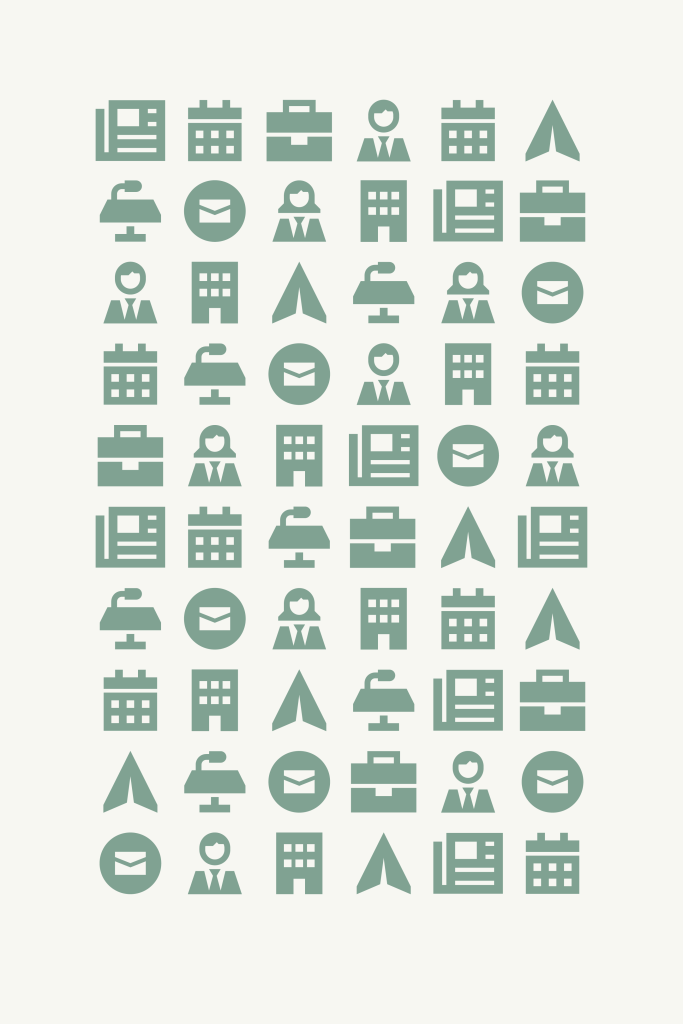My three interesting things for you this month…
1. The Hidden Cost of Keeping AI at Arm’s Length
In companies with fewer than 500 employees, one-in-five workers rarely or never touch AI and just 16 percent use it every day.
In other words, even as the tools mature, most small and mid-sized businesses (SMBs) are still treating AI like a novelty rather than a productivity engine. Anecdotally, these numbers match all teams I’m working with.
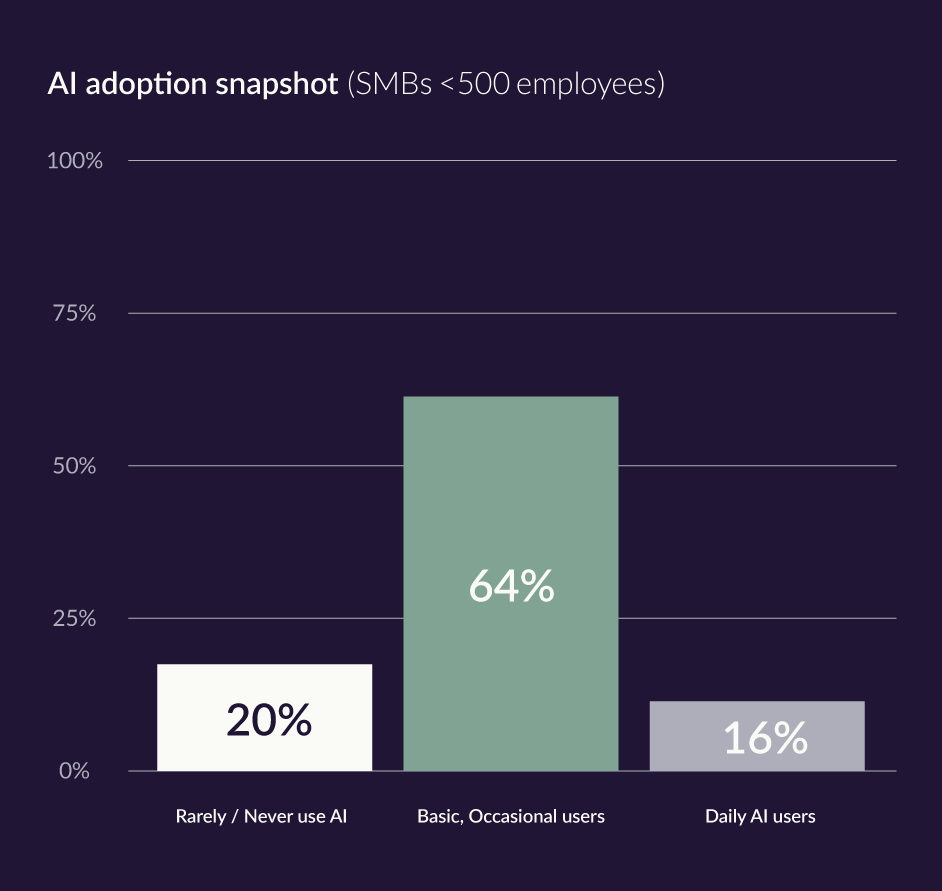
Why is adoption so low?
Section AI’s latest research points to four leadership blind spots that keep usage stuck in first gear:
- Leaders don’t know where to start – Many have never opened ChatGPT.
- Use cases are basic – Summarising emails or drafting boiler-plate text, nothing strategic.
- People are stuck in a “It won’t help my job” mind-set – Those in more senior positions see AI as a tool for juniors, not themselves.
- No official rollout – Without guidance, staff experiment in secret “shadow AI” silos. No alignment, governance, or shared learnings.
Why it matters
When people do level-up, the return is immediate. Eighty-four percent of self-described AI experts save more than four hours a week, compared with just 24 percent of novices. Across a 48-week working year that is the equivalent of an extra month of capacity for every proficient team member.
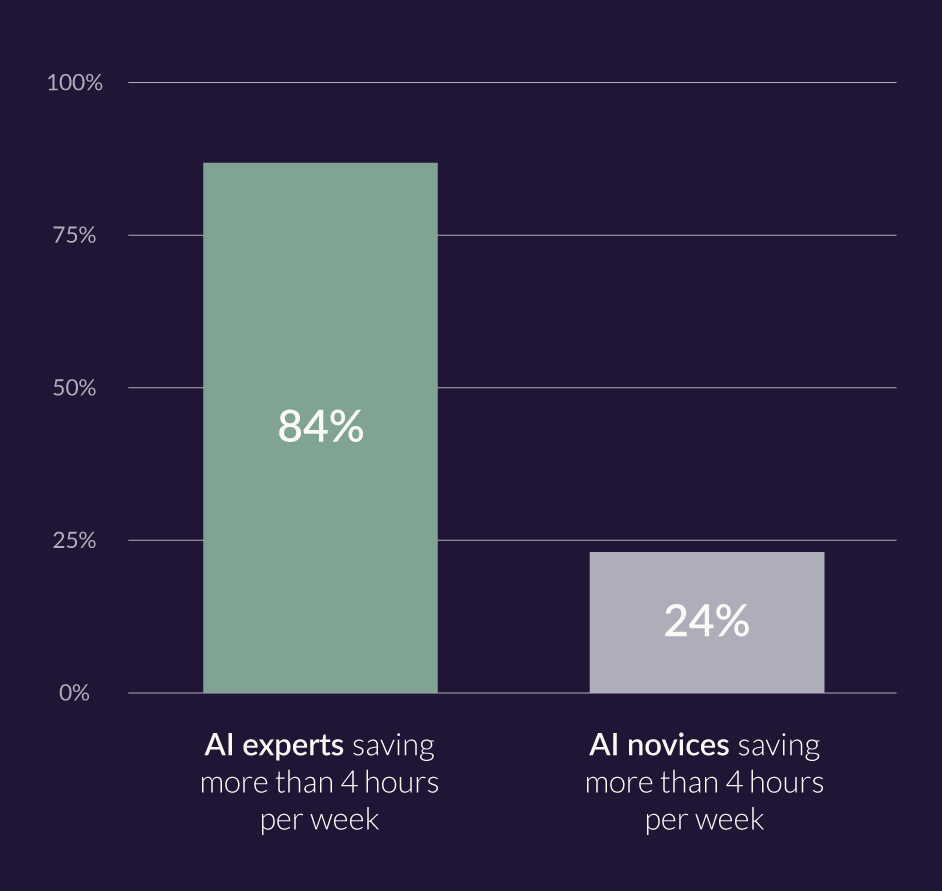
For finance functions already juggling month-end, forecasting and business partnering, that time dividend is hard to ignore.
What finance leaders can do this month:
Encourage the team to pay for their own ChatGPT
“What?! They’ll never do this! We’ll pay for it!” It’s only £20/month and gives far better answers, but you paying for it implies they can enter their data in. While its personal, everyone will know they can’t.
Switch everyone to the o3 model
Once paid, make o3 the default, either in settings or by always selecting it. It delivers more nuanced finance specific answers.
Put your biggest challenges into ChatGPT first
Start every new project by pasting the problem statement into ChatGPT and asking for approaches, risks and data needs. Treating AI as the first brainstorming stop accelerates solution design and surfaces blind spots early.
Set an “AI Friday” target
Ask each team member to share one workflow they sped up with AI in the past week. This normalises experimentation and creates peer-led learning loops.
AI fluency is now a differentiator. Leave it untapped and you forfeit weeks of capacity, slower insight cycles and, eventually, talent who would rather work where modern tools are standard.
Encourage the upgrade, point people at o3 then let ChatGPT tackle your toughest to-dos. The ROI will show up long before the next quarter-close!
2. Turning insight into action: mastering the What | Why | So what framework
Last week I had the privilege of speaking at the NHS CFO conference in Birmingham, sharing ideas on AI with 120+ senior finance leaders. One of the best sessions, however, was not about technology at all. Another speaker distilled her messages into the three simple steps we teach on our Finance Business Partner course: What, Why, So what.
- What – highlight the issue or opportunity in plain English.
- Why – spell out the wider impact on the organisation.
- So what – give the audience a clear next step they can own.
While others showed dense charts and policy updates, she sent every CFO home with a punch-list of actions. The applause told its own story.
Why this matters for finance business partners
Finance teams have no shortage of data, but influence comes from clarity. By framing each point through What, Why, So What you:
- Cut through noise. Stakeholders hear the headline first, not the footnotes.
- Link numbers to purpose. Explaining why an issue matters secures buy-in beyond the finance silo.
- Drive accountability. A specific ask (“approve interim staffing budget by Friday”) beats a vague recommendation every time.
Below are three practical examples you can lift straight into your next meeting:
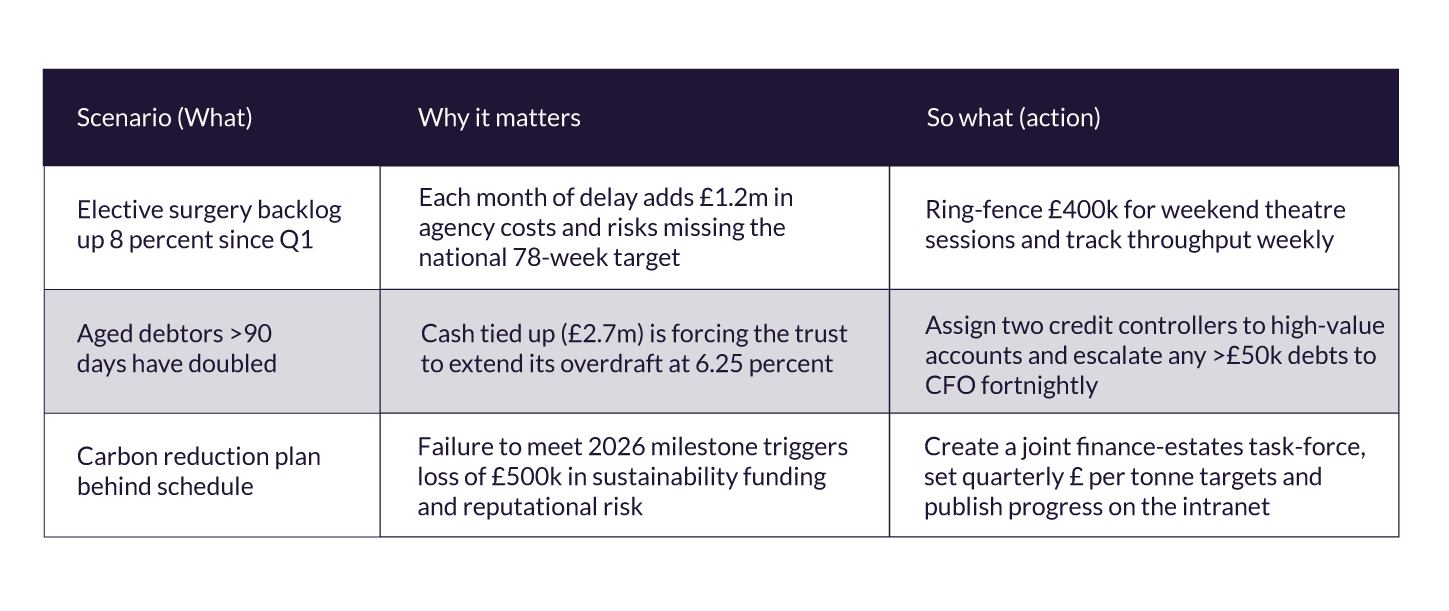
(Adapt the numbers to your organisation)
How to bake the framework into everyday practice
- Start every slide with a What | Why | So what heading. Force yourself to fill in each box before adding any chart.
- Rehearse aloud in 90 seconds. If you cannot explain the three parts in under a minute and a half, the message is not ready.
- Invite challenge. Ask a non-finance colleague to repeat your three points. If they stumble, refine.
- Finish every meeting with a verb. “Agree”, “deploy”, “monitor”: these verbs turn insight into a to-do.
Try implementing the What | Why | So what framework and let me know how you get on, I’d love to hear what changes!
3. Turbocharge your commercial credibility with a purchase funnel
Back in February we unpacked the drivers framework, the one-page map that shows how money really moves through your business.
A second lens further builds out your commercial toolkit: the purchase funnel. It tracks the journey from the whole market you could serve right down to the loyal customers who choose your premium offer.
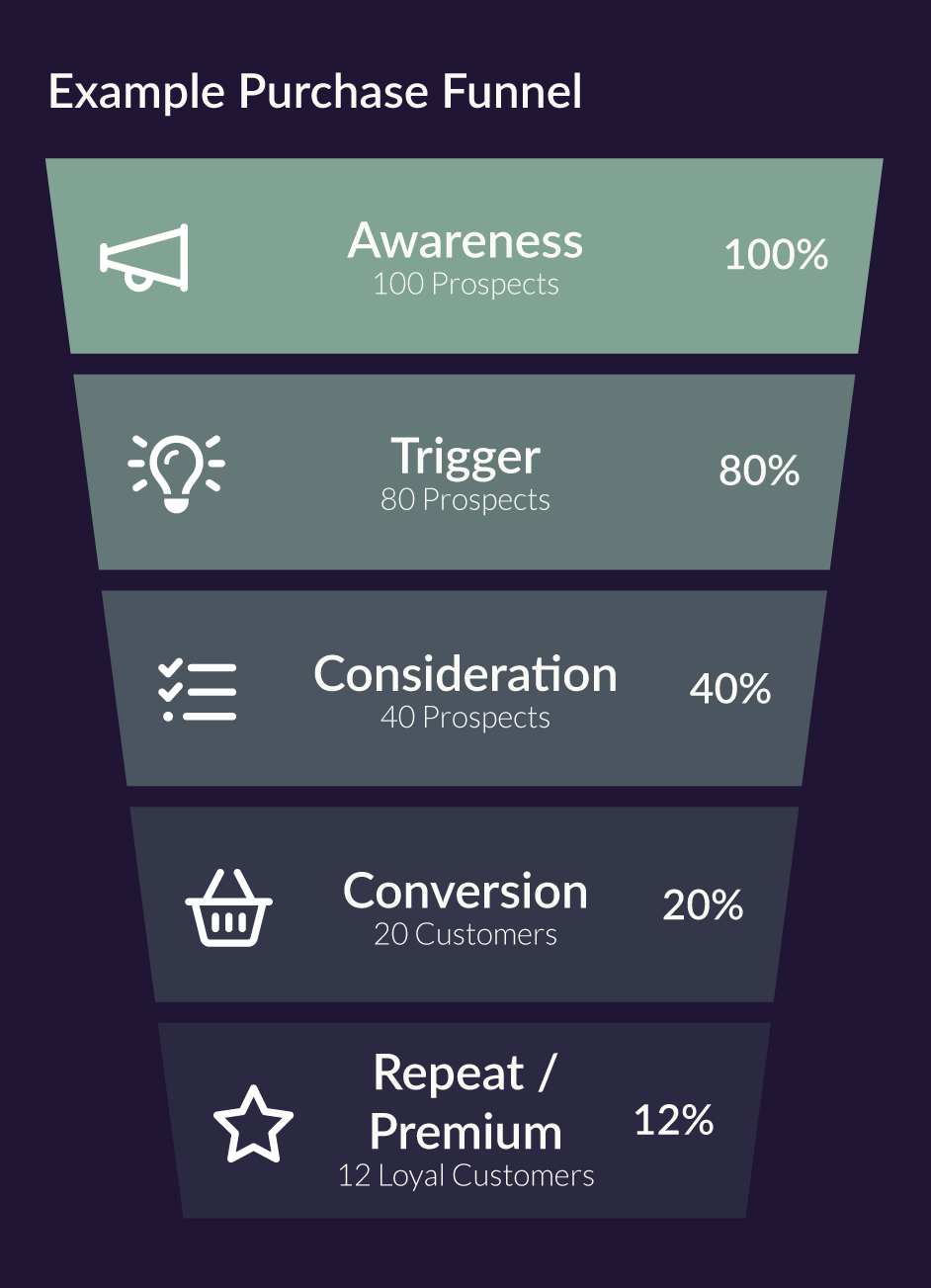
What is a purchase funnel?
Think of it as a set of progressive doors: a prospect must walk through each one before they choose to buy. The classic stages are Awareness → Consideration → Conversion → Repeat. But in reality every organisation tweaks the labels:
- SaaS platform – Market size → Website visit → Free trial → Paid plan → Annual renewal
- FMCG brand – Market size → TV reach → Shelf visibility → First purchase → Monthly shopper
- Healthcare provider – Eligible population → GP referral → Procedure → Post-op follow-up
Whichever words you pick, the funnel forces a simple question: What percentage of people drop out at each step and what would it be worth if we nudged just one tier higher?
Why is a commercial funnel so useful?
It brings structure to growth conversations that can otherwise feel vague or overly optimistic. A well-built funnel turns commercial intuition into actionable insight. Here’s how:
- Size the prize on one page. A funnel translates fuzzy phrases like “huge market potential” into hard numbers your exec team can debate.
- Prioritise investment. If 95 per cent of prospects never make it past consideration, spend marketing pounds on education not price promotions.
- Link to the drivers framework. The funnel shows how big the opportunity is while the drivers framework shows how the business converts that opportunity into profit. Together they close the loop between ambition and action.
So what? Turn insight into action with these five steps
Understanding the funnel is one thing, using it to shape decisions is another. These practical steps will help you build a version that drives clarity, focus, and commercial momentum.
- Define the levels. Speak to sales, marketing and ops and list every customer touch-point from first contact to premium renewal. Agree four to six clear stages.
- Harvest baseline data. Web analytics, CRM reports, EPOS scans, clinical records – use whatever evidence you have to estimate the headcount at each stage and the percentage that move forward. Perfection can wait; trends beat precision. If you have nothing, ask your trusty friend AI 🙂
- Quantify the value of a one-point gain. If moving the conversion rate from 5 to 6 per cent adds £700 k of gross margin, that becomes the benchmark for project ROI.
- Share the funnel in each commercial pack. Drop the graphic alongside month-end numbers so leaders see performance through a commercial lens not just a financial one.
- Refresh quarterly. Update the data, highlight the stage with the biggest leakage and assign one named owner to fix it before the next cycle.
Two quick examples to spark ideas
- Retail bank mortgage funnel: Homeowners in region (1.2 m) → Active switchers (90 k) → Quotes given (18 k) → Offers accepted (7 k) → Evening call-backs completed (5 k). A 10 per cent lift in call-back completion adds 500 new mortgages worth £1.5 m in net interest income.
- Streaming service upsell funnel: Registered users (3 m) → Monthly viewers (1.9 m) → Free tier binge-watchers (600 k) → Premium upgrade trial (120 k) → Paid annual pass (78 k). Boosting trial-to-paid by three percentage points delivers £4.7 m in ARR.
Want more insights?
Sign up to my interesting things newsletter to get tips like this and more.
